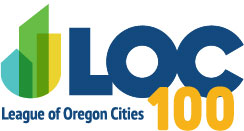LOC News
Local Advocacy Brings Funding Win at E-Board, But You Have More to Do
The legislative Joint Emergency Board met remotely this week to consider how to spend the remainder of the $1.38 billion in Coronavirus Relief Fund (CRF) monies entrusted to the state for distribution. View a recording of the hearing, and access the meeting materials online.
The LOC was concerned that if the Legislature spent all remaining CRF resources there would be no additional money for distributions to local government; you can read the letter we submitted with our partners at the Association of Oregon Counties (AOC). The LOC issued a call to action for all city elected officials to contact their representatives at the Legislature and you responded in force. As we made lobbying calls, it was obvious that the Legislature had heard from you, and what would have otherwise been a predetermined result was very much in doubt.
After some lengthy and thoughtful debate, cities scored a partial win: the Legislature spent $95 million in local money, but held back an additional $105 million by voting down a staff recommendation. This fight is not over - the full Legislature meets next Monday for a special session focused on the state budget. The LOC is again asking for your help to secure additional resources for local government, and we have three requests.
First, we are asking cities to complete this survey. This will give us additional information we need to advocate on your behalf. This primarily meant for cities receiving funds from the state, but cities in Multnomah and Washington counties are encouraged to complete by referencing the funds being redistributed across the Metro area.
Second, we need to thank the legislators who voted with us last week, especially if you were one of the folks who reached out to these members. Drop them a quick note at the very least. This includes these members of the E-Board from the Republican caucus - without them this would not have been possible:
- Sen.FredGirod@state.or.us
- Sen.BillHansell@oregonlegislature.gov
- Sen.BillHansell@oregonlegislature.gov
- Rep.ChristineDrazan@oregonlegislature.gov
- rep.gregsmith@oregonlegislature.gov
- rep.duanestark@oregonlegislature.gov
We also owe a special thanks to the two Democrats who voted with us and against their party leadership - this was not an easy stand and we needed the help:
Third, we need all elected officials to be reaching out to their legislators starting today and continuing through next week’s special session. Getting more resources will be difficult and will depend on your work.
Below are some talking points you can use in these conversations:
- Cities have been on the front lines of the pandemic, we know the needs of our community and want to be partners with the state in the response, but we cannot do this without resources.
- The CARES Act gave $1.38 billion in funding to the state, including 45% (almost $625 million) that was intended for distribution to local governments. (See US Treasury FAQ, page 7, first paragraph)
- The Legislature had set aside $400 million for local government, less than 2/3 of what we should have received. So far, cities and counties have received $46 million, and there is another $156 million currently in the process of distribution, this leaves $200 million remaining that needs to be allocated to cities and counties across the state.
- The state is proposing to spend the second $200 million on cities’ behalf. If this is truly a local share, then restrictions on how local governments may spend the money beyond what is in the CARES Act “are not permissible.” (See US Treasury FAQ, page 7, third paragraph)
- Talk about the needs in your community and how you plan to put your current allocation to use.
- Share any unmet needs you are unable to address with your current share and what you might do with additional resources.
If you hear: “But the state needs to spend this money for PPE, testing, tracing and quarantine.”
- Of course, we agree health-related costs should be prioritized, but the state received $1.38 billion in CRF funding. If local government receives $400 million, total the state would have almost $1 billion dollars to cover this cost.
- We all need to live within our means; the state may need to rethink some of its other priorities.
- Most health-related costs are FEMA reimbursable, so why can’t the state cover these costs with reserves and seek reimbursement through the Stafford Act and FEMA public assistance?
If you hear: “Cities have not even spent the money we already shared with them.”
- Cities did not know their actual round two allocation until July 10. The idea that they would have spent their entire share in less than a month is absurd.
- Cities do not know if they will have any additional funding through December, and many are being prudent in how they spend not knowing what the fall will bring in terms of cases.
- Other cities have already gone through their entire allocation, some having spent on programs not even knowing if they would be reimbursed (if includes your city, say so).
- The use of CRF money is complicated, and many of these programs require legal review and cannot be stood up overnight.
- The state has not given an accounting of what portion of their share has been spent so far, so we think they also have significant funds remaining.
Thank you in advance for taking these steps, we will not succeed without your work. If you have questions, please reach out.
Contact: Mark Gharst, Lobbyist – 503-991-2192 or mgharst@orcities.org
Last Updated 8/7/20

